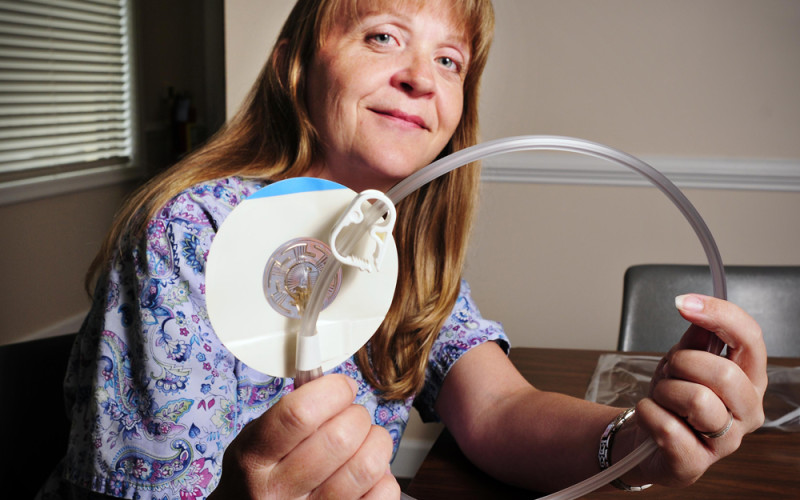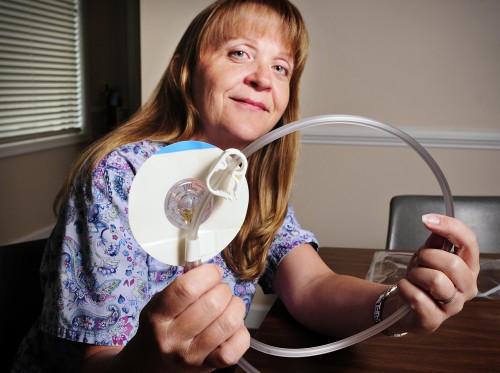Visiting Nurse Association uses innovation to heal a troublesome wound


A can-do attitude and resourcefulness helped nurse Margie Bloom, RN, CCM, WCC, and her team at the Christiana Care Visiting Nurse Association tackle a challenging issue: Getting a wound VAC (vacuum assisted closure) over a spot it was not expected to fit—an ear.
The wound VAC is a negative pressure treatment that helps pull fluids and nutrients to the skin to help heal tissue. Generally, it requires a relatively flat surface to create a vacuum seal. When Paul Riggs, 95, of Rehoboth, underwent surgery to treat a tumor in his parotid glands (salivary glands), part of his ear was removed. His doctor called on Bloom to see if she could use a wound VAC to help it heal.
Dawn Huss, RN, MS, BC, a visiting nurse who is Riggs’ case manager, describes the device as a modern version of leeches, which were used to “suck the infection out to get a good blood flow to the area.’’ It requires a solid seal.
“Usually you use a piece of black foam and something like Saran Wrap, and on flat surfaces it adheres and is pretty simple,” she said. “But the ear is not flat.’’
The night before the procedure, Bloom was lying in bed wondering how she would solve the problem. Then she came up with an idea.
“I filled his ear with a soft alginate, so there were no bumps or curves, and at the top of the ear, I actually put a stoma ring and stoma putty, which we use for people who have
ostomies (surgically created openings in the body for the discharge of body wastes). I stuck it in the helix of the ear to hold the shape. Then I took a drape and wrapped from front to back of the ear—and it worked.’’
Huss, who teamed up with Bloom for the first few days of the treatment and now does it on her own, said the fix was an example of Bloom’s creativity.
Her supervisor, Lori Davis-Palmer, RN, said, “This is definitely a first, something I never would have expected we could do. Even the manufacturer was impressed.’’
For Bloom, it’s part of the job. Home-care nurses don’t always have access to the equipment available in clinics, so they have to rely on the tools they have.